Complement receptor Mac-1 is an adaptor for NB1 (CD177)-mediated PR3-ANCA neutrophil activation
- PMID: 21193407
- PMCID: PMC3044964
- DOI: 10.1074/jbc.M110.171256
Complement receptor Mac-1 is an adaptor for NB1 (CD177)-mediated PR3-ANCA neutrophil activation
Abstract
The glycosylphosphatidylinositol (GPI)-anchored neutrophil-specific receptor NB1 (CD177) presents the autoantigen proteinase 3 (PR3) on the membrane of a neutrophil subset. PR3-ANCA-activated neutrophils participate in small-vessel vasculitis. Since NB1 lacks an intracellular domain, we characterized components of the NB1 signaling complex that are pivotal for neutrophil activation. PR3-ANCA resulted in degranulation and superoxide production in the mNB1(pos)/PR3(high) neutrophils, but not in the mNB1(neg)/PR3(low) subset, whereas MPO-ANCA and fMLP caused similar responses. The NB1 signaling complex that was precipitated from plasma membranes contained the transmembrane receptor Mac-1 (CD11b/CD18) as shown by MS/MS analysis and immunoblotting. NB1 co-precipitation was less for CD11a and not detectable for CD11c. NB1 showed direct protein-protein interactions with both CD11b and CD11a by surface plasmon resonance analysis (SPR). However, when these integrins were presented as heterodimeric transmembrane proteins on transfected cells, only CD11b/CD18 (Mac-1)-transfected cells adhered to immobilized NB1 protein. This adhesion was inhibited by mAb against NB1, CD11b, and CD18. NB1, PR3, and Mac-1 were located within lipid rafts. In addition, confocal microscopy showed the strongest NB1 co-localization with CD11b and CD18 on the neutrophil. Stimulation with NB1-activating mAb triggered degranulation and superoxide production in mNB1(pos)/mPR3(high) neutrophils, and this effect was reduced using blocking antibodies to CD11b. CD11b blockade also inhibited PR3-ANCA-induced neutrophil activation, even when β2-integrin ligand-dependent signals were omitted. We establish the pivotal role of the NB1-Mac-1 receptor interaction for PR3-ANCA-mediated neutrophil activation.
Figures
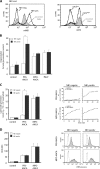


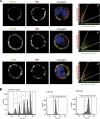
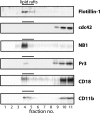
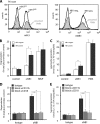
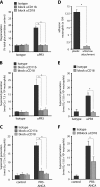
Similar articles
-
Competitively disrupting the neutrophil-specific receptor-autoantigen CD177:proteinase 3 membrane complex reduces anti-PR3 antibody-induced neutrophil activation.J Biol Chem. 2022 Mar;298(3):101598. doi: 10.1016/j.jbc.2022.101598. Epub 2022 Jan 19. J Biol Chem. 2022. PMID: 35063507 Free PMC article.
-
Interaction between CD177 and platelet endothelial cell adhesion molecule-1 downregulates membrane-bound proteinase-3 (PR3) expression on neutrophils and attenuates neutrophil activation induced by PR3-ANCA.Arthritis Res Ther. 2018 Sep 20;20(1):213. doi: 10.1186/s13075-018-1710-0. Arthritis Res Ther. 2018. PMID: 30236159 Free PMC article.
-
The use of small molecule high-throughput screening to identify inhibitors of the proteinase 3-NB1 interaction.Clin Exp Immunol. 2010 Aug;161(2):389-96. doi: 10.1111/j.1365-2249.2010.04174.x. Epub 2010 May 7. Clin Exp Immunol. 2010. PMID: 20456416 Free PMC article.
-
Interaction of proteinase 3 with its associated partners: implications in the pathogenesis of Wegener's granulomatosis.Curr Opin Rheumatol. 2010 Jan;22(1):1-7. doi: 10.1097/BOR.0b013e3283331594. Curr Opin Rheumatol. 2010. PMID: 19881350 Review.
-
Pathogenesis of PR3-ANCA associated vasculitis.J Autoimmun. 2008 Feb-Mar;30(1-2):29-36. doi: 10.1016/j.jaut.2007.11.005. Epub 2007 Dec 26. J Autoimmun. 2008. PMID: 18162369 Review.
Cited by
-
The neutrophil: one cell on many missions or many cells with different agendas?Cell Tissue Res. 2018 Mar;371(3):415-423. doi: 10.1007/s00441-017-2780-z. Epub 2018 Feb 12. Cell Tissue Res. 2018. PMID: 29435651 Free PMC article. Review.
-
ANCA-associated vasculitis.Nat Rev Dis Primers. 2020 Aug 27;6(1):71. doi: 10.1038/s41572-020-0204-y. Nat Rev Dis Primers. 2020. PMID: 32855422 Review.
-
The Promiscuous Profile of Complement Receptor 3 in Ligand Binding, Immune Modulation, and Pathophysiology.Front Immunol. 2021 Apr 29;12:662164. doi: 10.3389/fimmu.2021.662164. eCollection 2021. Front Immunol. 2021. PMID: 33995387 Free PMC article. Review.
-
Neutrophil phenotypes in health and disease.Eur J Clin Invest. 2018 Nov;48 Suppl 2(Suppl Suppl 2):e12943. doi: 10.1111/eci.12943. Epub 2018 May 25. Eur J Clin Invest. 2018. PMID: 29682724 Free PMC article. Review.
-
Phenotypic and functional plasticity of cells of innate immunity: macrophages, mast cells and neutrophils.Nat Immunol. 2011 Oct 19;12(11):1035-44. doi: 10.1038/ni.2109. Nat Immunol. 2011. PMID: 22012443 Free PMC article. Review.
References
Publication types
MeSH terms
Substances
LinkOut - more resources
Full Text Sources
Other Literature Sources
Molecular Biology Databases
Research Materials
Miscellaneous

